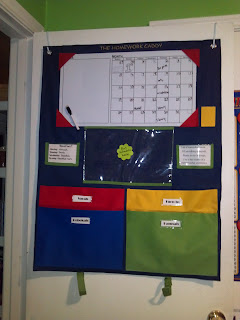So figuring out how to get more nutrition in to them has become a new hobby. We are by no means a "totally health conscious family" - but we are trying to make some changes for the better. Here are some tips and ideas that I have recently discovered that are helping us make better choices:
1. Don't buy the junk food in the first place. If it's not in the house, it's not an option. Kids (or parents) cannot be tempted to eat what isn't there. (I am a coupon shopper, this may be more difficult for those looking to save money on "cheap" snacks - just keep in mind, those highly processed foods that have coupons save you money on the purchase price, but your kids may be getting exactly the nutrition that you pay for and that could cost you more long term)
2. Portion size. Most Americans do not realize what a "serving" should be. Just because it is in a single container, doesn't mean we need to eat the whole package. Look at the label. Teach your kids to look at the label. My kids were shocked to find out that the nutrition information (fat, sugar, carbs, calories...) were all based on a set amount. Those calories come from 15 potato chips, not the entire bag. There may be 2 servings in that can of soda or juice. When they ask for a snack they now understand they get "one serving" of whatever food it is they are asking for.
3. Have healthy snack options easily available. Make it just as easy to grab a healthy snack as it was to grab a bag of chips or candy.
-Have individual portion size snacks available in the pantry and the fridge.
-Pre-cut apple slices and put them in small containers covered with pineapple juice and water. They
will not turn brown and they stay crisp for up to a week (we found straight pineapple juice affected
the taste too much).
-Make your own muffins and breads (with healthy ingredients) instead of buying donuts or high
fat/sugar muffins. You can individually package them just as easy. And freeze them in Tupperware
type containers. Just let them thaw on the counter or microwave for 10 seconds.
-Make fruit smoothies and freeze them in popsicle molds (even paper cups and a craft still will do)
 |
| Frozen tropical fruit mix from Walmart, frozen strawberries, frozen blueberries, frozen bananas, about 1 cup of Pom Juice (and a hand full of spinach, but I'm not telling the kids:) |
4. Help the budget by buying on sale. You can take advantage of the summer fruit deals and freeze them for later. It is usually easiest to clean the fruit, remove seeds, and basically make them ready to eat and then "flash freeze" them. Basically that means spreading them out on a tray and freezing them individually and then, after they are frozen, put them into a freezer bag or container. That way when you want just a few blueberries, you can take out a few without having to defrost the whole block.
5. Get the kids involved. I have one of "those kids". You know, the ones who would live on chicken nuggets and pizza. She has not eaten a vegetable voluntarily since the day she was born. But when we planted a garden (lettuce, spinach, green beans and peas), I started to discover the pea pods (shells) surrounding the garden when I went out to water. My picky eater was eating peas! She wasn't thrilled about the lettuce or green beans, but by golly she ate the peas. Next winter we will plant several:). This kid hates oatmeal and bananas. But this morning she offered to make banana muffins. Well, my recipe has bananas of course, but also oatmeal. She made the muffins, ate the muffins, AND said she liked them. Get kids involved in the growing and preparing of healthy foods and just maybe they'll actually like the end product.
6. Taste test - often. Repeated exposure will often help kids develop a liking. For years my picky eater wouldn't touch broccoli without gagging on it. Not dramatic, just a reflex, she's done it on any soft food since she was a baby. Then I realized, I was only giving it to her cooked. So I cut it raw. She was NOT happy with the texture of the florets either. Then a stroke of brilliance hit me, it's broccoli from top to bottom. So what if I strip the hard part off the stem and slice the inside of the stem like chips. It worked. She liked it. And she didn't choke on it. So now when I steam broccoli for everyone else, I peel the stems and 2 of my kids eat broccoli chips. Another mom suggested to me to take kids to a natural market and let them pick out things to taste. Or pick out a fruit like oranges and get several different kinds. By accident, this is how we discovered our love for Asian Pears. They have the sweetness of pears, but are crispy (not mushy for already identified picky eater).
7. Sneak in healthy foods where you can.
-Pureed sweet potato or spinach in spaghetti sauce (use baby food if you don't have good blender)
-Use applesauce instead of oil in baked goods (play with amounts, but I've used just applesauce in
some recipes and they come out just fine)
-Mix pancake batter in the blender and put in bananas or if you want pink ones, add strawberries
-Offer grated zucchini as a salad mix in
I asked my homeschool group for ideas and here are some links for additional ideas and recipes
Deceptively Delicious
I hear that the chocolate chip cookies (with garbonzo beans) are great and kid approved!
Green Smoothie Girl
Sneaky Chef





